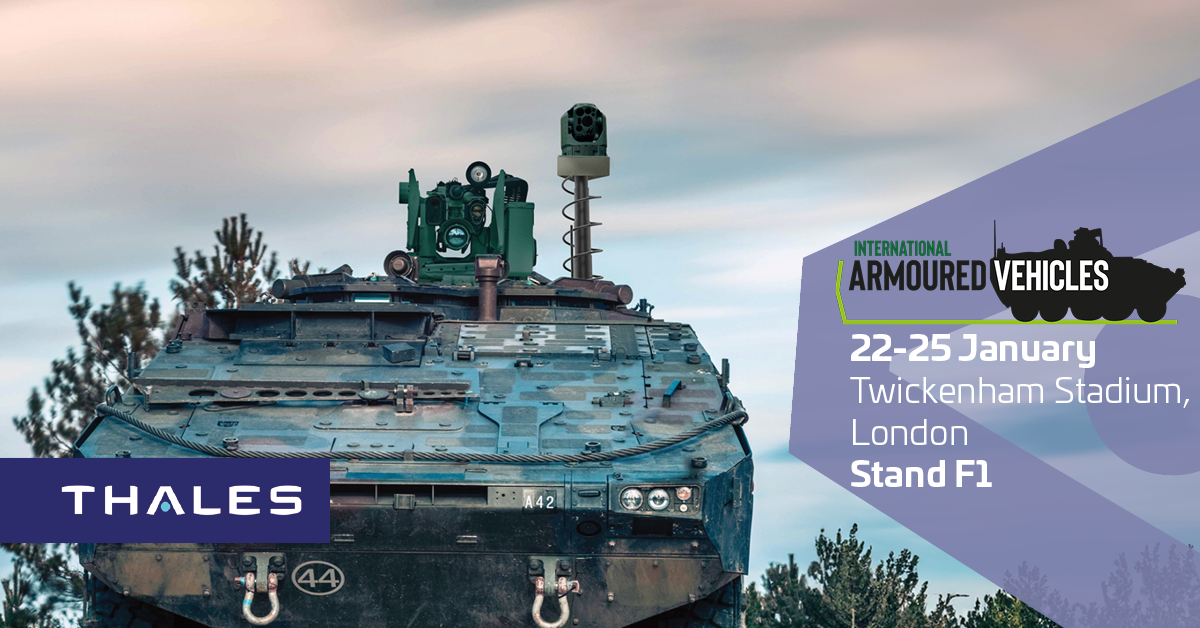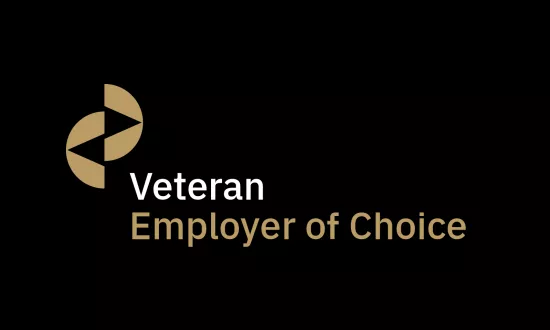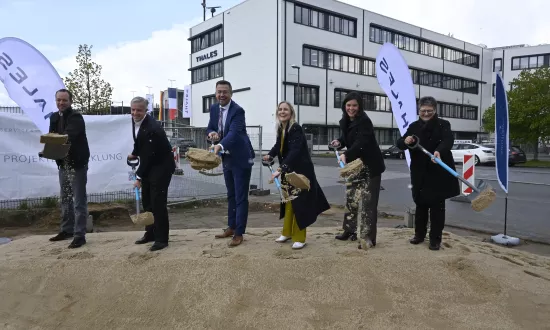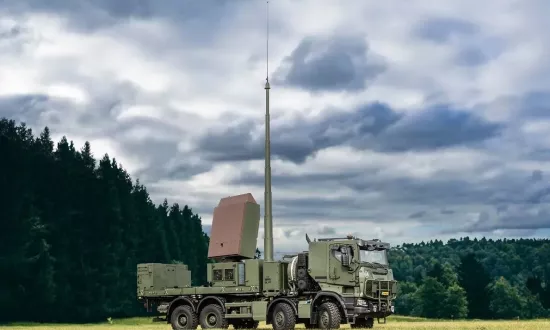Reforging the iron triangle: five qualities that every future armoured vehicle needs
 Jonathan Welch, Capture Leader at Thales
Jonathan Welch, Capture Leader at Thales
Some are small and nimble, stealthy and discreet. Others are formidable in their size and bulk. Despite the variety of vehicles on show at this year’s International Armoured Vehicles Conference (IAV), they’re united by one promise: We’ll get you where you need to go – safely and at speed – to meet any threat, from any adversary.
Getting soldiers, supplies and weapons systems to the right place at the right time is a goal that’s remained constant across the globe since the early part of the last century. It is only the means of achieving it that have changed.
Today’s battlefield is more contested, congested and nuanced than it has been for decades. The traditional ‘iron triangle’ requires review and adaptation to meet the challenges of this increasingly complex operating environment. Firepower, Protection, and Mobility are all qualities that an armoured and protected vehicle needs to balance to be deemed battle-ready, but they are qualities that need supplementing if we’re to help future Land Forces achieve their objectives.
With the Army’s current fleet of Protected Mobility vehicles rapidly approaching their Out of Service Dates – and as the MOD looks to rationalise its vehicle types in the Land Mobility Programme – there is a need to reforge the iron triangle into something more fit for the modern operating environment. It’s why the customer will walk the floor at IAVC24 with a particularly critical eye as they identify, examine and assess the sorts of qualities that will make sure its streamlined fleet of vehicles can keep pace with the shifting character of war.
Of all the supplementary qualities the Army will be looking for, I’d argue that they could be boiled down to five key factors.
Survivability: safeguarding against conventional and unconventional threats
Survivability isn’t just a matter of protecting personnel from underbelly blasts. In today’s operating environment, soldiers face complex threats that proliferate rapidly and often in more covert, unconventional ways. All Protected Mobility vehicles require some form of active soft-kill protection measures, such as obfuscating smokes and electronic countermeasure systems to deflect inbound explosive threats and protect against cyberattacks on vehicle systems. In a resource-constrained environment, these vehicles may need to be fitted for – rather than with – these systems, providing flexibility on deployment and without having to go through full refit programmes.
Survivability is not just about protection. On encountering enemy threats, the vehicle that is network enabled to instantly share its position, status and systems with other combat vehicles will deliver tactical advantage while improving its own chances of survival. It provides a systemically protected network for personnel, technologies and equipment, each working in tandem to protect the other. It’s a cornerstone of Collaborative Combat: data, machines, systems and soldiers working as one, sharing not only situational awareness but also the burden of identifying, prioritising and engaging any given threat to keep the entire force better protected while delivering tactical advantage.
Commonality: the strength of shared systems
Collaborative Combat and systemic protection rests on our ability to build vehicles that aren’t simply people carriers. Instead, they need to work as a platform for mission systems, where these same systems, components and technologies can be shared across different variants or models of armoured vehicles within a common family or class.
Take a GVA-compliant platform like Hawkei. It can, of course, get soldiers where they need to go. But it can do so while enhancing networked awareness across crews thanks to a connection with a shared system on another platform. The effect is immediate and hive-like: teams know where each other are, what’s going on and who’s involved to make better-informed decisions, and make them that much faster than the adversary. The vehicle becomes a mission system bearer that, with generic vehicle architectures, can quickly and effectively swap out sensors and effectors to reflect the changing circumstances of the modern battlefield.
Modularity: swift transformation, rapid adaptation
Reducing vehicle fleets will unquestionably optimise maintenance and logistic supply chains but it means that new designs will need to be flexible, scalable and endlessly adaptable to meet evolving threats. The commonality outlined above begets their need to be modular. Modularity means swappable systems, faster reconfiguration times and more agile fleets in pursuit of front-line readiness and battlefield superiority.
Modular by design can mean both the ability to transfer mission systems easily and effectively on the battlefield and an inherent ability to be assembled quickly, with a minimum of tooling. The innovative and modular design of Hawkei, for example, enables simplified assembly. Hawkei is deliberately designed to be constructed anywhere and in significantly less time than conventional protected vehicles. With logistics and attrition becoming increasingly important as near-peer and peer-to-peer conflicts emerge, escalate and proliferate, accelerating the production line can help armed forces withstand sustained pressure from adversaries.
Lethality: packing the biggest possible punch
Lethality is – for obvious reasons – hugely important for fighting echelon vehicles in the line of fire. But the technology-enabled, 360° battlefield now requires all armoured and protected vehicles used in the operational support role to possess a robust self-protection capability. The PROTECTOR RS4 Remote Weapon Station (RWS) exemplifies industry’s response to this need – with the cutting-edge, modular platform-mounted weapon system, providing digitally enhanced situational awareness, combining to increase lethality and improve the survivability of the platform and its crew.
Naturally, lethality packages will differ depending on the tactical role of the vehicle. But one thing must remain constant if the MOD’s streamlined fleet is to be effective: they must provide lethality packages that can respond to 360° threats and provide tactical commanders with versatile options. This necessitates integrating mission-critical sub-systems into the core protected vehicle, ensuring it can seamlessly and safely transport troops under armour, manage battlefield casualties, allow for the rapid change of gun or missile launcher calibre, serve as a command and control hub and effectively handle short-range air defence and counter-unmanned aerial vehicle capabilities.
The success of such a comprehensive approach is exemplified by Bushmaster, showcasing the adaptability of a core protected vehicle with integrated lethality sub-systems across a spectrum of mission requirements. As the MoD continues to evolve its strategies, it is evident that the ability to respond to a multitude of threats while maintaining adaptability remains a cornerstone of effective modern warfare.
Mobility: higher payload, bigger pay off
Imagine trying to manoeuvre a 15-tonne vehicle around the hard corners and sharp edges of a small but tightly-packed town. Imagine its residents crowding the streets, its cars causing congestion, its buildings blocking what’s around the corner. It’s a scene that modern soldiers are increasingly having to contend with as operations move from open land to urban spaces – and our adversaries know it.
If we’re to develop and deploy new vehicle designs for MOD that are as agile as they are protected, and that are as modular as they are adaptable, we need to consider payload as an integral part of mobility. The higher the payload, the more mission systems you can equip on a vehicle; the more mission systems shared across a fleet, the better the situational awareness, and the sharper the decision-making advantage.
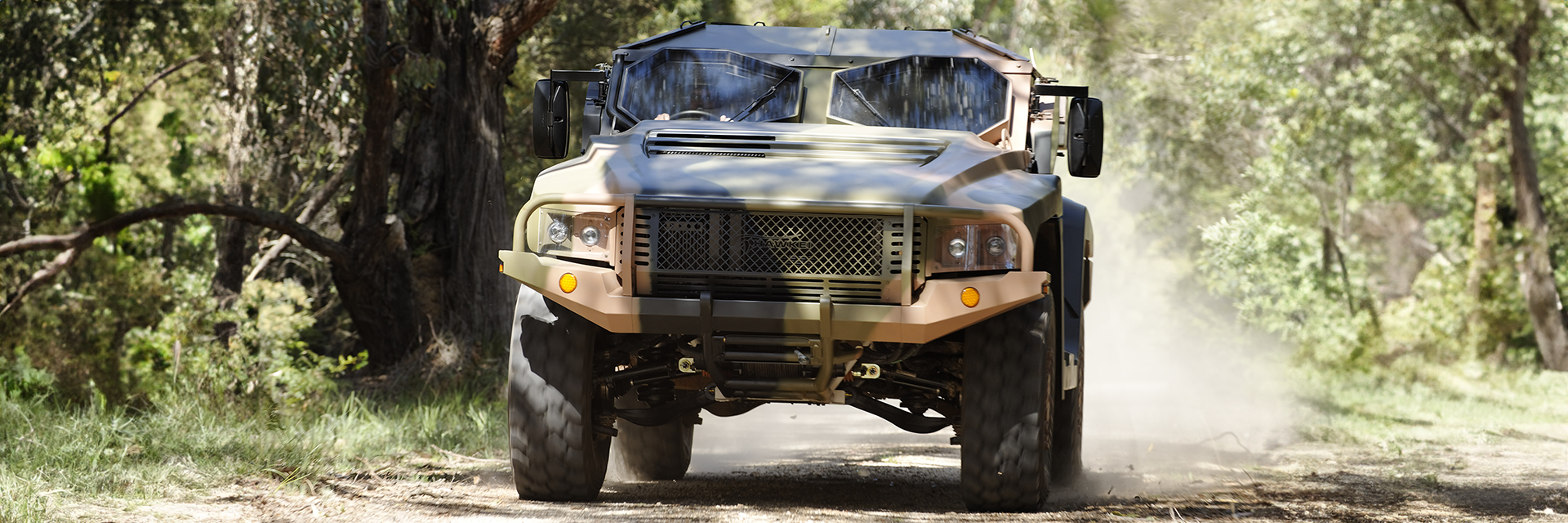
A unified front for industry, a new dawn for armoured vehicle development
The apparent complexity of IAVC24’s theme – ‘How will we fight in the future?’ – belies one singular, overarching ambition of our armed forces: to fight harder, smarter, and for that much longer than our adversaries.
Our role as industry suppliers remains unchanged in its aim: to allow the armed forces to accommodate, exploit, and adapt to change. If we’re to help the MOD reforge the iron triangle into one that integrates survivability, commonality, modularity, lethality and mobility, we need to learn to share. We need to open our architectures, agree a common baseline and combine our technologies.
We can take our cue – and our courage – from the MOD. When 80% delivered on time is better than 100% delivered late, the MOD understands that it ‘can’t wait endlessly for the gold standard’. It’s unafraid to ‘take decisions earlier to bring good equipment into service’. It needs to mobilise now – and industry’s ability to meet this need, to get coherent, innovative solutions off the drawing board and available for deployment, rests on our willingness to collaborate.
With so much innovation under one roof, and with so many skilled technologists walking the floor, opportunities for collaboration are rife at events like IAV. I think it’s important not to see each stand as a silo, but rather as a chance to extend, augment and amplify another tool, technology or even company. By taking an unabashed interest in one another’s work, we can start to ask and answer the question: how can these systems and capabilities be combined to help get MOD where it needs to go?
To find out more, visit Thales at the IAV conference, Stand F1, where you’ll be able to get hands on with the PAAG as well as sitting inside Thales’ Hawkei, its next generation protected vehicle.
